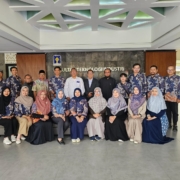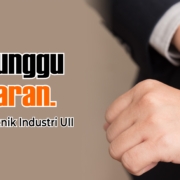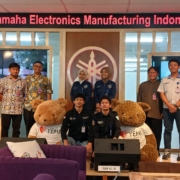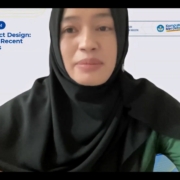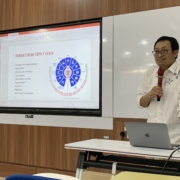Cost Benefit Analysis of Occupational Health and Safety (OHS) Implementation
Industrial Engineering Study Program, Faculty of Industrial Technology, Universitas Islam Indonesia held a public lecture on (8/6). The event was held in order to explore the knowledge of benefit cost analysis in the implementation of OSH. A total of 200 students who took Occupational Health and Safety (OHS) and Environmental Health and Safety (EHS) courses attended the event which took place via Zoom Meeting. The event with the theme “Cost Benefit Analysis of Occupational Health and Safety (OHS) Implementation” invited a resource person, namely Azjar Jhon Raghozt who is the PJK3 of PT Mawi Sarana Samawi with moderator Atyanti Dyah Prabaswari, S.T., M.Sc.
The resource person started the material session by re-discussing the definition of K3. Furthermore, he explained what the costs are when implementing OSH in a company. Examples of OHS implementation costs include the cost of preparing an Occupational Safety & Health plan, the cost of purchasing Work Protective Equipment and Personal Protective Equipment (PPE), and the cost of installing OHS signs. “Personal Protective Equipment includes safety helmets, eye protection, SCBA for diving activities, yes. There are ear plugs and ear muffs, respiratory protection, gloves, safety shoes, full body harness. There is a life vest, there is a safety vest, and there is an apron or shirt, yes, friends. That is one of the cost analyses that we have to budget for as well.” he said.
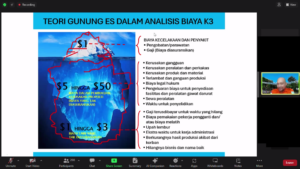
Then, he also explained that, “When we don’t implement OHS, there are some costs that are really very detrimental to the company, friends. Maybe the company only knows, oh, there is an accident, that’s it, there is already insurance. Whereas in the iceberg theory if we don’t analyze the third cost, there really is a huge loss even to the closure of the company.” he explained. In general, the only visible costs are accident and illness costs. In reality, there are many other costs that can cause damage, delays, and time losses if companies do not budget for OHS costs. Furthermore, there was a question and answer session to conclude the public lecture that morning.
Audiamara Vinka


